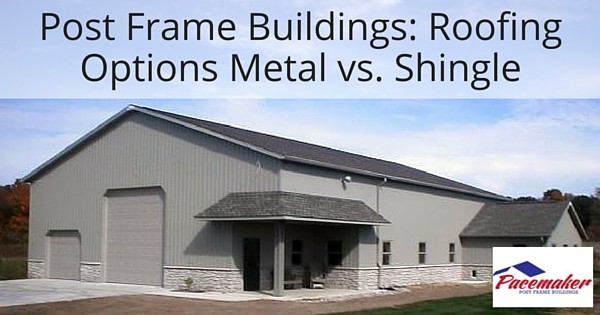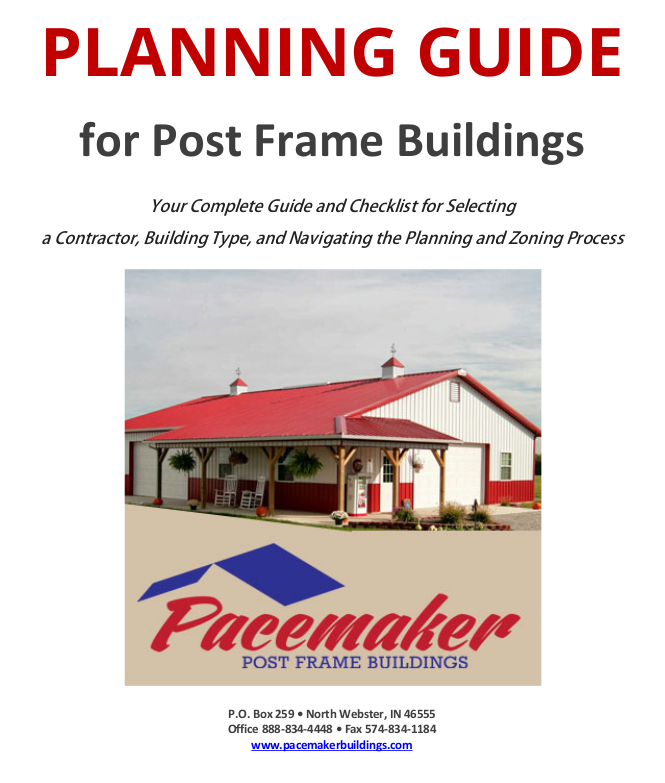
For many years, post frame construction has been considered the best option for barns, storage, and other rural construction. With advancements in the technology, materials and methods, post frame is viable for many other types of buildings now as well. Today private homes, medical facilities, schools and more are using post frame techniques to meet time and funding challenges.
Selecting Roofing Materials for Post Frame Construction
Roofing and façade materials for post frame construction may be the same as for traditional buildings. The owner of a post frame building can select roofing materials based on their aesthetic preference; desire to coordinate with nearby buildings, energy efficiency, weather conditions, and cost. Choosing between shingle and metal roofing depends on the owner’s personal preference and certainly on the conditions that the building will need to withstand.
Advantages of Shingle Roofing
- Available in a wide range of styles and colors
- Easy to install
- Typically guaranteed for 20-30 years
- Perceived aesthetic preference and value
- Less expensive than other materials
Advantages of Metal Roofing
- Easy to install
- Does not usually require maintenance
- Can be painted to match surroundings or style
- Resistant to insects, rot, mold and other damaging factors that affect shingle and wood
- Metal materials reflect heat better, thus reducing energy costs by an estimated 20%
- Snow tends to slide off easier, reducing the potential load on the support structure. Ice dams are less likely to occur
- Fire resistant
- Total lighter weight than shingle material (approximately
- Available in a range of grades and styles depending on owner preference, aesthetics and weather and snow conditions.
- Long lasting
Cost and Value
Metal roofing tends to be more cost effective in designing a new structure than shingle roofing. One real difference is the amount of specialized and technical expertise required to install a metal roof properly. But the potential energy savings and durability may offset these original cost differences.
In some areas of the country, metal roofing is less appealing to buyers who are less interested in the practical benefits and more concerned about value perception and coordinating with the neighborhood. Mountain areas and other high snow regions tend to have a majority of buildings with metal roofing as a matter of practicality.
Other Considerations
Another factor to consider with metal roofing, particularly in private residences and public buildings, can be the noise level. Even with extensive insulation and sound deadening barriers, the patter of rain or hail on a metal roof can be bothersome for some.
While metal roofs do not “attract” lightning any more than other material, it is important to ensure that these buildings are properly grounded.
Types of Metal Roofing
Steel roofing is available in various forms that include galvanized, interlocking steel shingles, galvalume, and steel standing seam.
Aluminum is considered a higher, more long lasting option than steel. This material may be in shingles or standing seam form.
Copper and zinc compose the highest quality metal roofing material and the most expensive. As an example, copper roofing may cost around $1000 per 10’ x 10’ square for the material alone compared to aluminum at about $500 and steel at $400, depending on the style.
Asphalt shingles cost roughly $300 per 100 square feet depending upon the choice.
Final Considerations
There are positive reasons for selecting a metal or shingle roofing. Both are widely used and accepted, and products continue to improve. The owner’s selection will depend upon the setting, total costs, and personal or visual preferences.
Need help deciding? Contact us at Pacemaker Buildings to allow our team to guide you through the options specific to your needs and location.
